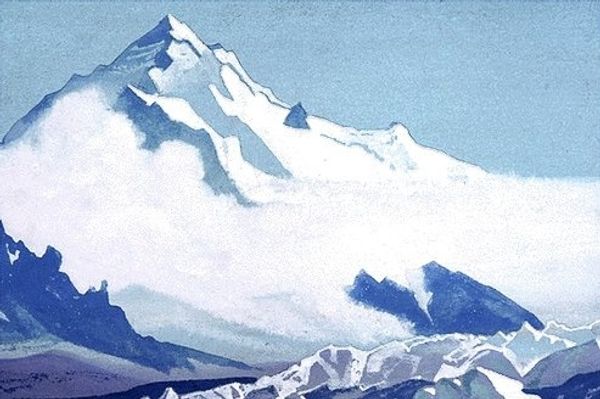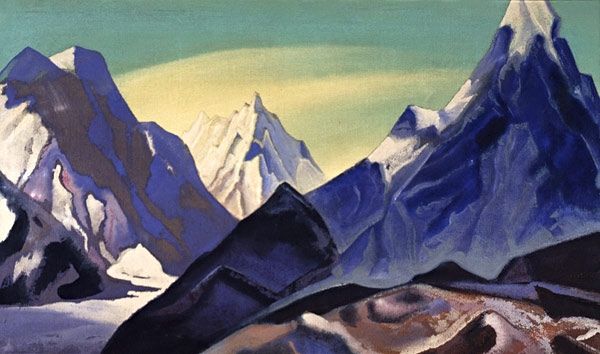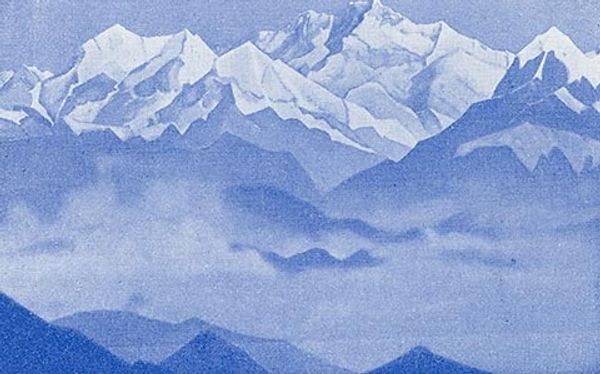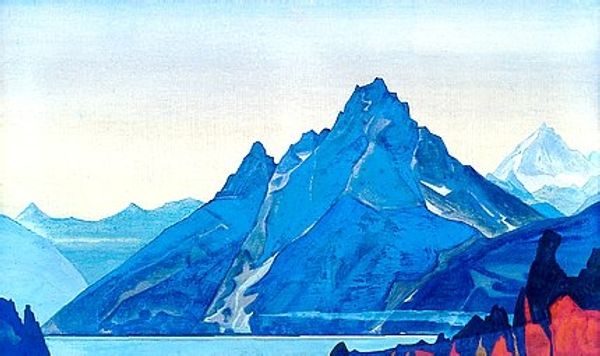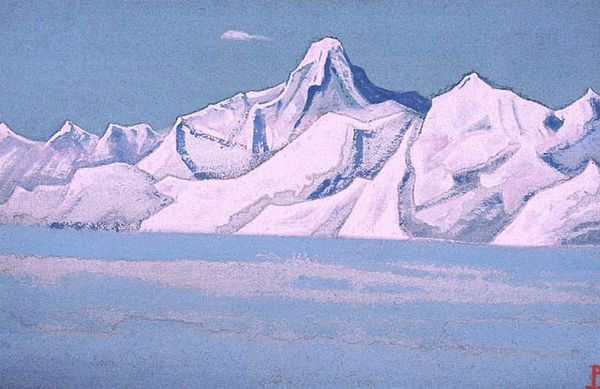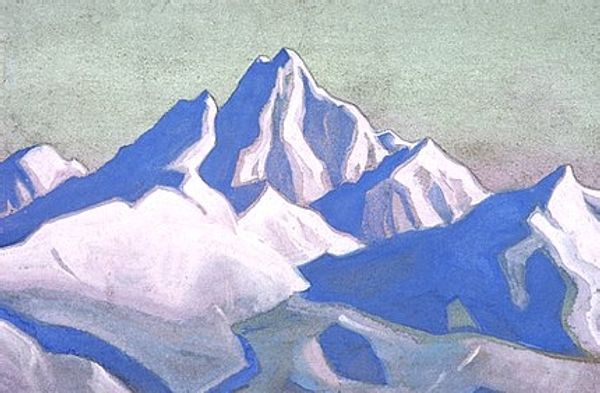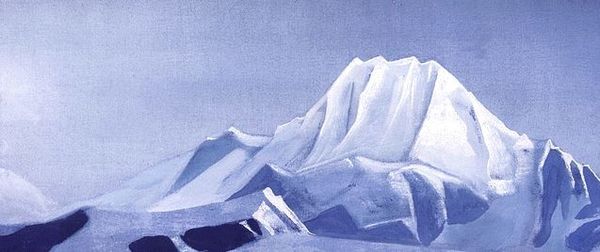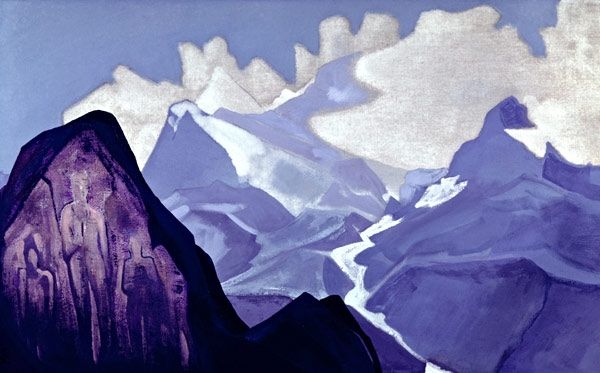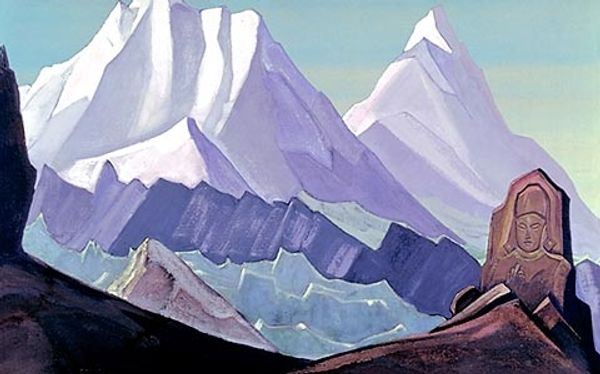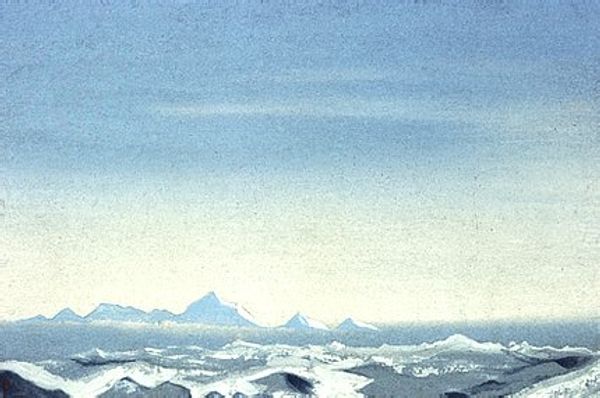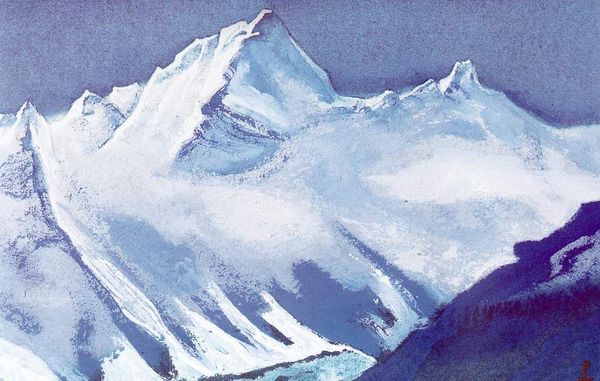
tempera, painting
#
sky
#
the-ancients
#
tempera
#
painting
#
landscape
#
romanticism
#
mountain
#
abstraction
Copyright: Public domain
Editor: Here we have Nicholas Roerich's "Himalayas," painted using tempera. It's awash in cool blues and whites, which gives it this incredibly serene and almost ethereal feel. What do you see in this piece? Curator: I see a potent symbol of aspiration. Mountains, throughout various cultures, aren’t just geographical formations. They are often seen as the meeting point between the earthly and the divine, a pathway for spiritual ascent. The crisp, almost abstract, rendering of the peaks eliminates earthly distractions, doesn’t it? Editor: Yes, definitely! The lack of detail directs you away from realistic depiction. But what specific symbolic weight might the Himalayas hold? Curator: Roerich was deeply influenced by theosophy and Eastern philosophies. The Himalayas, often considered the abode of gods in Hinduism and Buddhism, represent a sacred space, a site of meditation and enlightenment. The monochrome palette, devoid of the distraction of earthly colours, amplifies this feeling. The blues evoke vastness, spirituality, and inner peace. Does the abstraction remind you of mandalas? Editor: I can see that. And you’re saying this invites the viewer to contemplate something greater than themselves? Curator: Precisely! Think about how Roerich employs simplified forms. He’s tapping into a kind of visual shorthand, an iconography understood across different spiritual traditions. The mountain becomes a signifier of inner transformation, echoing the personal journey to higher consciousness. Editor: It's interesting how Roerich distills the essence of such a powerful landscape into these cool tones and simplified shapes. It's both visually calming and thought-provoking. Curator: Indeed, and that’s the magic of art. Roerich understood how to visually express profound spiritual concepts, engaging both our eyes and our souls. It really embodies a connection between image and cultural memory.
Comments
No comments
Be the first to comment and join the conversation on the ultimate creative platform.
